When is a duck not a duck? When it’s a coot. When swimming among the wildfowl at a local park, the coot looks as though it is among kin, but look out for that white forehead shield – which gives rise to the phrase “as bald as a coot” – and the bill which is pointed, not flattened like that of a duck.
In this guide, we take a closer look at the coot, revealing what they look like, where they live, what they eat and how to tell the difference between a coot and a moorhen.
Interested in learning more about British wildlife? Check out our guides to frogs and toads, wading birds and reptiles.
Rails, crakes and coots
The rail family includes moorhens, coots, water rails, corncrakes and spotted crakes. Find out more about these characterful birds with our spotter's guide.
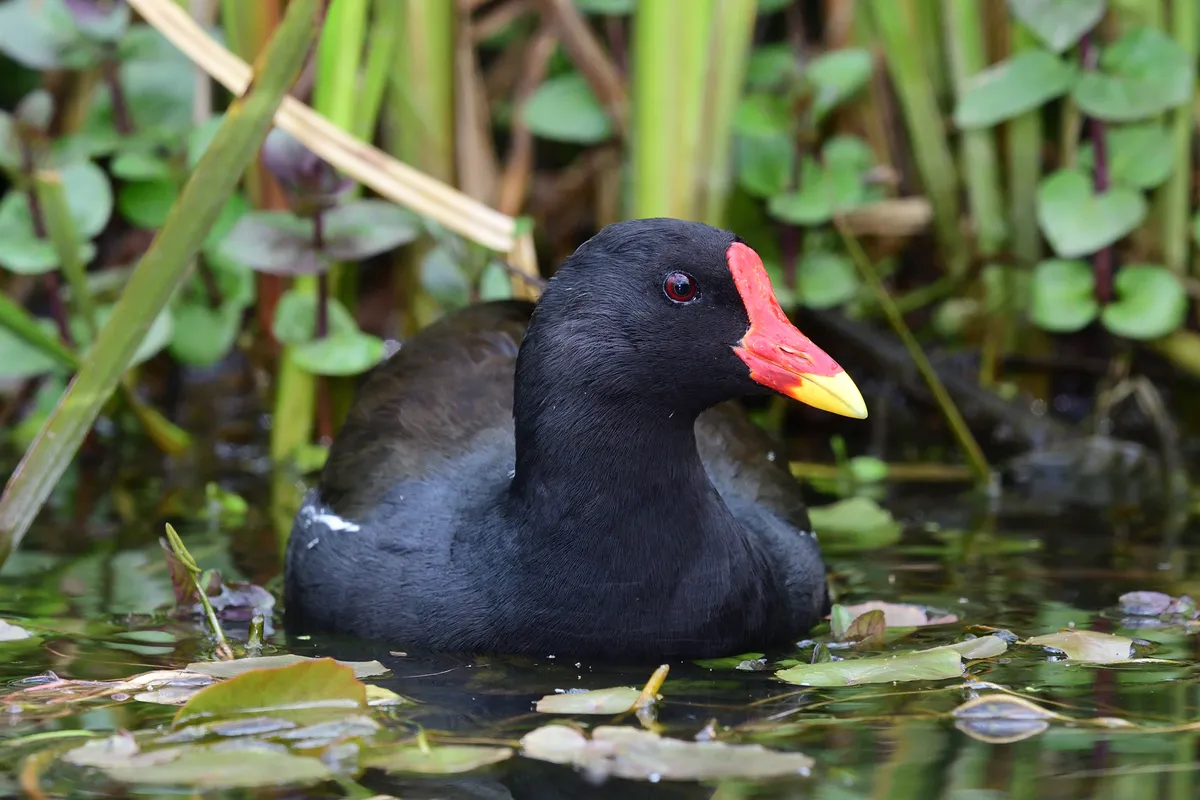
What does a coot look like?
The coot – Fulica atra – has a distinctive white forehead shield and pointed bill. And when it comes out of the water, look at those odd, blue feet which are lobed not webbed.
This is a really common bird, easily identified by its slate-black plumage and, one has to say, its equally dark countenance.
In addition, coots invariably appear to be in conflict with one another, and sometimes this mood upgrades to spawning vigorous, spectacular fights, in which birds lean back and box with their feet, with much splashing, excitement and ego. The size of a coot’s frontal shield, incidentally, is a sign of dominance in coot society.
These birds measure 36–39cm in size.
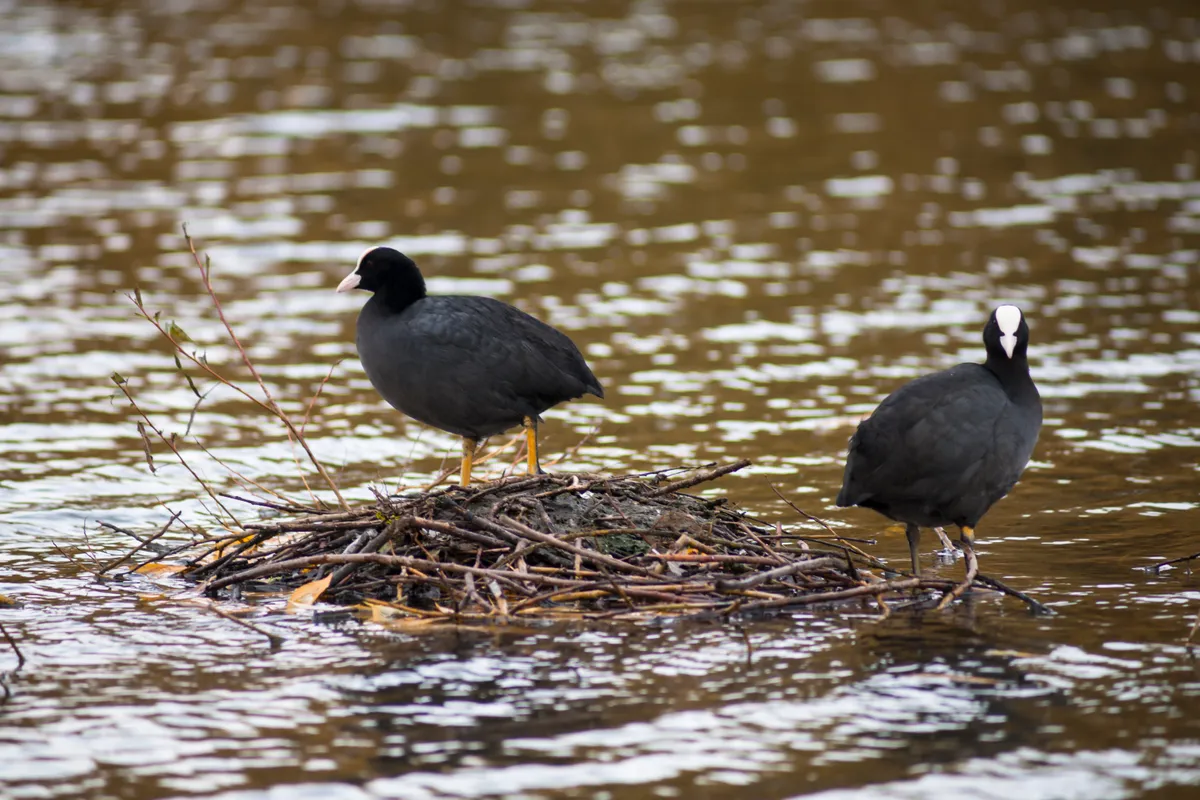
What does a coot sound like?
One of Britain’s rarest birds is a coot in a good mood. The impression is partly derived from its loud, piercing “kut” call, which gives the bird its name, and other similar sounds, which all have an irritated edge.
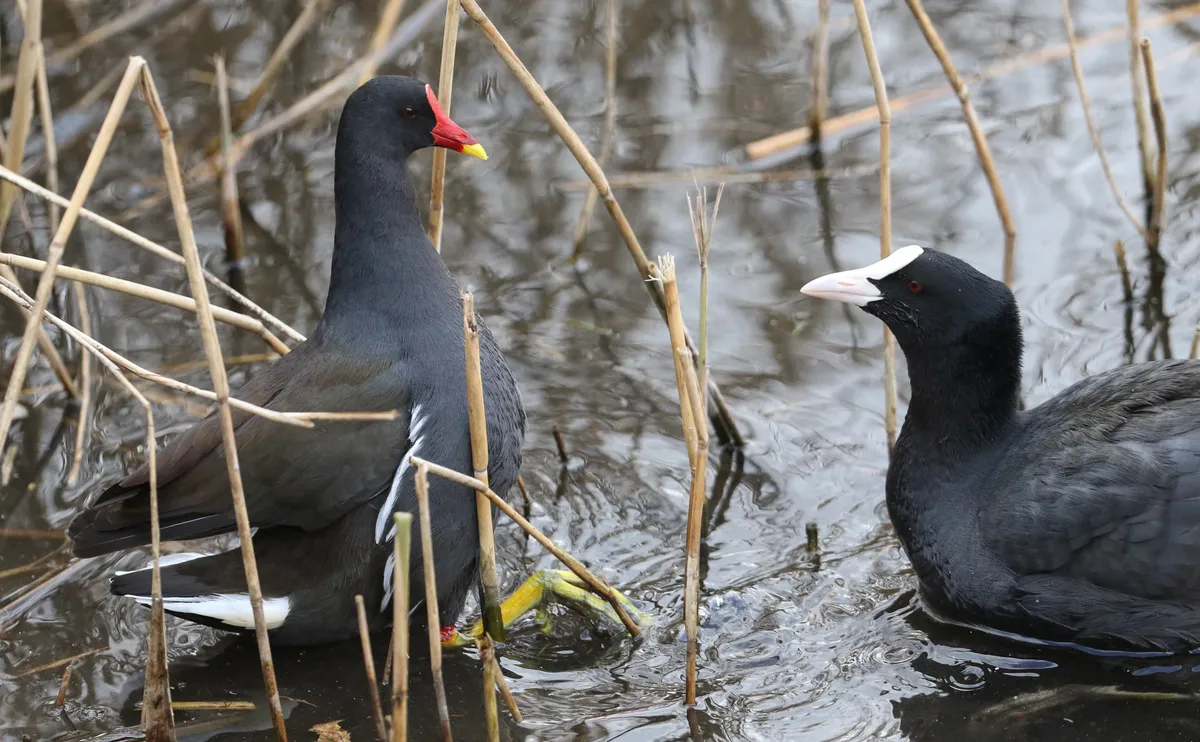
Coot distribution
Coots are common and widespread across the UK, with 25,000 pairs (190,000 in winter).
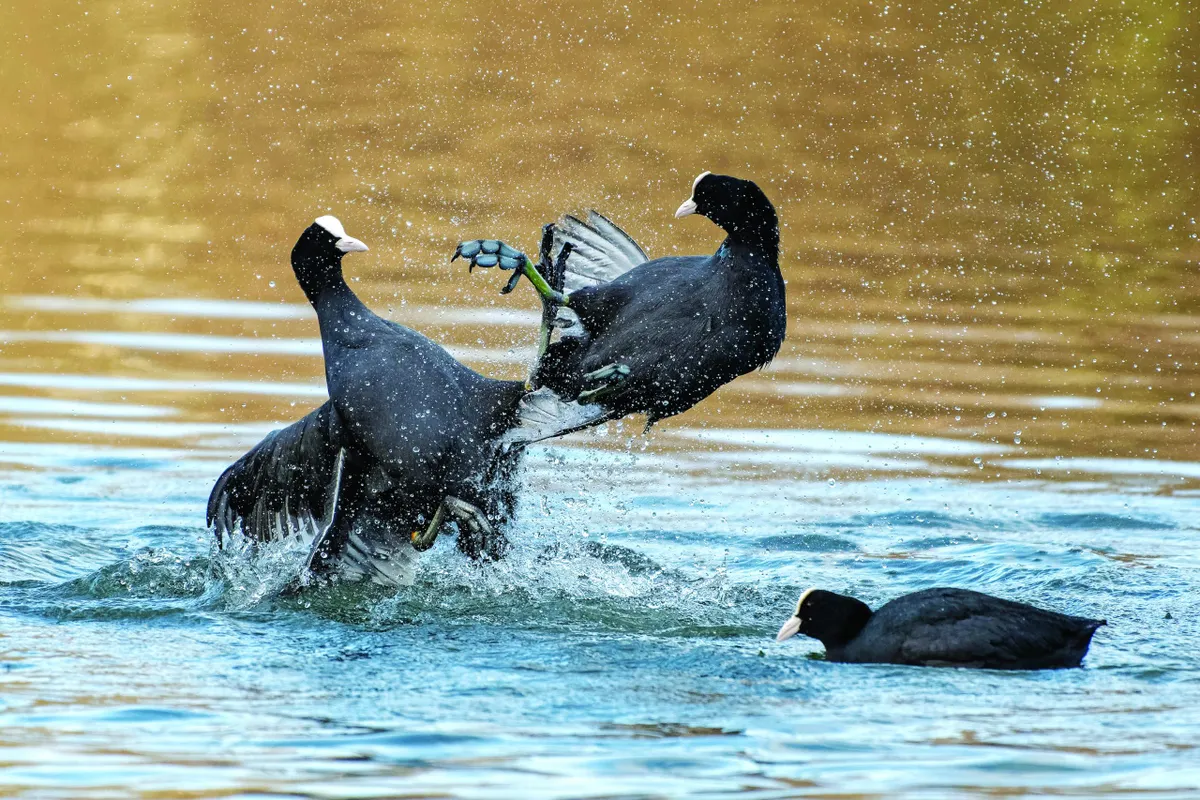
Coot breeding, eggs and chicks
In the breeding season, coots build large rafts of water weed for their nests which are often very easy to see, with no real effort at concealment.
They lay 5-7 eggs and may bring up three broods in a season. The young look relatively attractive, as furry as black bumblebees with enormous feet, their heads stained reddish. However, they make the most incredibly incessant, irritating, squeaky pleading begs to their parents, going on all day.
A brood often “splits,” with the male and female parents attending to their assigned chicks.
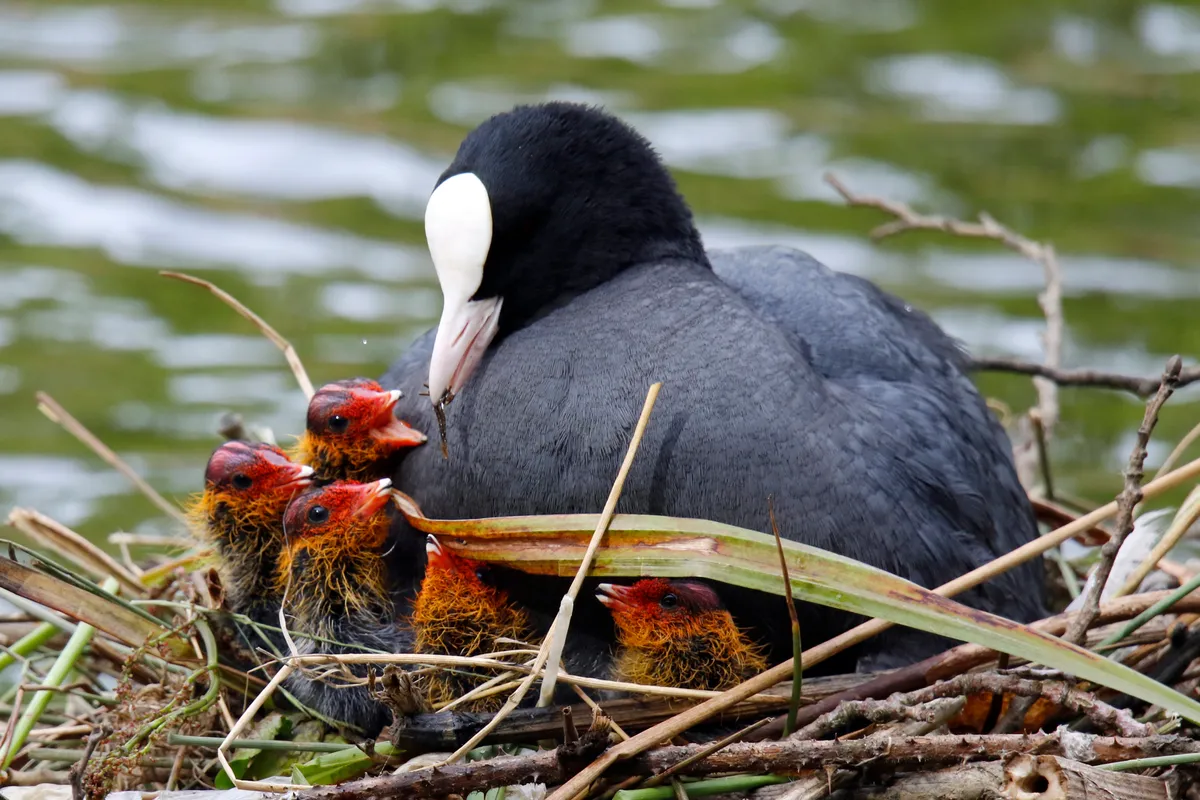
Coot diet
Coots are largely vegetarian and, in contrast to other rails, they typically dive underneath the surface of the water to find food.
Coot video
Please note that external videos may contain ads:
Moorhen or coot?/Credit: BTO Bird ID
